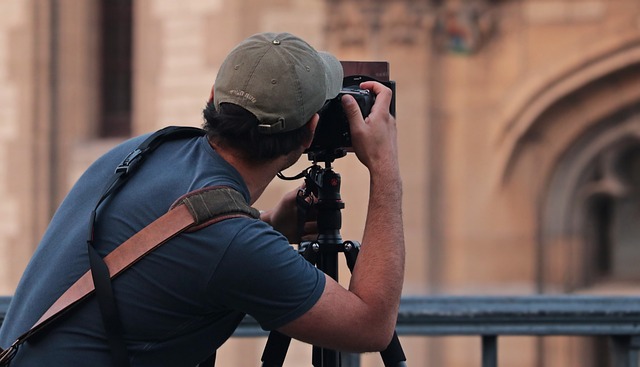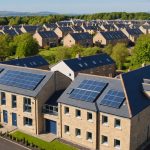Captivating property listings hinge on exceptional photography that brings a space to life. High-quality images not only showcase a property’s unique features but also evoke emotions, inspiring potential buyers to envision themselves in the space. Understanding the nuances of real estate photography from staging to post-processing can set your listings apart. Discovering best practices and insights can elevate your approach and ultimately drive successful sales.
Transforming Property Listings with Real Estate Photography
The importance of high-quality images in property listings cannot be overstated. Effective real estate photography techniques are crucial for capturing potential buyers’ attention. High-quality images not only present properties in their best light but also facilitate quicker sales. Best practices for real estate photography include paying attention to the details of composition and storytelling within each frame. Staging plays a vital role in photography, helping to create a warm and welcoming environment that allows potential buyers to envision themselves in the space.
Have you seen this : Unlocking Compliance: A Developer”s Guide to Meeting Scotland”s Energy Efficiency Standards for New Constructions
Lighting is another foundational element, significantly impacting how spaces are perceived in photographs. Utilizing natural light whenever possible can enhance image quality, while strategically placed artificial lighting can fill in shadows and highlight key features. Incorporating these techniques effectively requires meticulous preparation and practice, ensuring each property is presented at its best. Professional real estate photographers bring expertise and specialized equipment, making a significant difference in executing these techniques. Learn more on this page to explore how mastering these elements can elevate your real estate photography and help in creating impactful property listings.
Pricing and Services in Real Estate Photography
Pricing Guidelines for Real Estate Photography
Determining real estate photography pricing involves multiple factors. Basic guidelines suggest charging under $200 for properties up to 3,000 square feet. For larger homes, prices exceed this amount, with luxury listings potentially reaching between $2,000 and $5,000. Additional services like drone video may add $200 to $400 per minute of footage. Effective keywords for real estate listings can aid in targeting the right clients, emphasizing the value of professional property photography.
Also to read : Navigating Planning Refusals: A Homeowner”s Guide to Challenging Council Decisions in the Lake District
Range of Services (Photography, Videography, and Virtual Tours)
Diverse services offered by photographers include traditional photography, videography, and virtual tours. Virtual tours and 3D models provide an immersive experience, showcasing unique property features. Hiring a real estate photographer with expertise in real estate listing photography trends can elevate a property’s marketability. Emerging trends highlight the use of drone photography for aerial shots, offering prospective buyers a comprehensive view of the property.
Factors Influencing Costs (Location, Property Size, Additional Services)
Real estate photography pricing is influenced by location and property size. Suburban areas may have different rates compared to urban settings, while larger properties necessitate more time and resources. Additional services, such as staging and editing, increase costs but enhance image quality. Using important real estate photography equipment, like wide-angle lenses, can significantly improve the depiction of space.
Essential Techniques and Equipment for Real Estate Photography
Recommended Equipment for High-Quality Images
In real estate photography, utilizing the right important real estate photography equipment is fundamental for capturing high-quality property images. A wide-angle lens, typically in the range of 16-24mm, is crucial for photographing spacious interiors. This lens helps showcase the true dimensions of rooms without distortion, unlike a fisheye lens which should be avoided. Additionally, a stable tripod is indispensable for clear and balanced shots, especially in low light. Using drones is becoming prevalent in property photography, as they offer unique aerial views, enhancing effective property listing photos significantly.
Techniques for Capturing Stunning Property Photos
Achieving stunning property photos goes beyond equipment; it requires mastering real estate photography techniques. Lighting is a critical component; natural light should be maximized, while additional lighting tools can help avoid shadows or highlights. Understanding composition is equally essential, as the right angle and framing can emphasize a property’s best features. Techniques like bringing focus to open spaces and optimizing exterior and interior real estate shots can transform how a property is perceived.
Tips for Post-Processing and Editing Real Estate Images
Editing is where good photos become great. Utilizing editing software for real estate photos like Adobe Lightroom allows for adjustments in brightness, contrast, and color, enhancing the overall quality. Correcting lens distortion and maintaining a consistent style across photos are real estate photo editing tips pivotal for a professional finish. Post-processing techniques also involve ensuring the weather looks optimal through sky replacements, leading to more appealing real estate photography for listings.
Building a Brand and Online Presence as a Real Estate Photographer
Strategies for Developing a Strong Online Portfolio
Establishing a compelling online portfolio is essential for any real estate photographer. Begin by showcasing high-quality property images ensure your portfolio includes both exterior and interior shots that highlight your photography’s versatility. Leverage the power of virtual tours and drone photography to give potential clients an immersive experience. Regularly update the portfolio with examples of real estate photography techniques, demonstrating your capability in staging properties for photography and using drones in property photography.
Importance of Social Media in Marketing Real Estate Photography
Social media platforms are vital for promoting real estate photography for listings. Platforms like Instagram and Facebook provide a venue to spotlight your work, reach new audiences, and engage with potential clients. Use photography branding for real estate agents to craft a consistent and recognizable online presence. This includes posting regular content that showcases unique property features through photography and curating engaging photo editing tips to showcase your expertise.
Networking Tips for Connecting with Real Estate Professionals
Building relationships with real estate agents can significantly boost your career. Attend local real estate events and offer photography workshops to demonstrate your skills. Engage in leveraging real estate photography for social media by tagging agencies in your posts. Networking allows photographers to obtain referrals and discover opportunities, so make a point to provide business cards and real estate photography marketing materials that leave a lasting impression.











